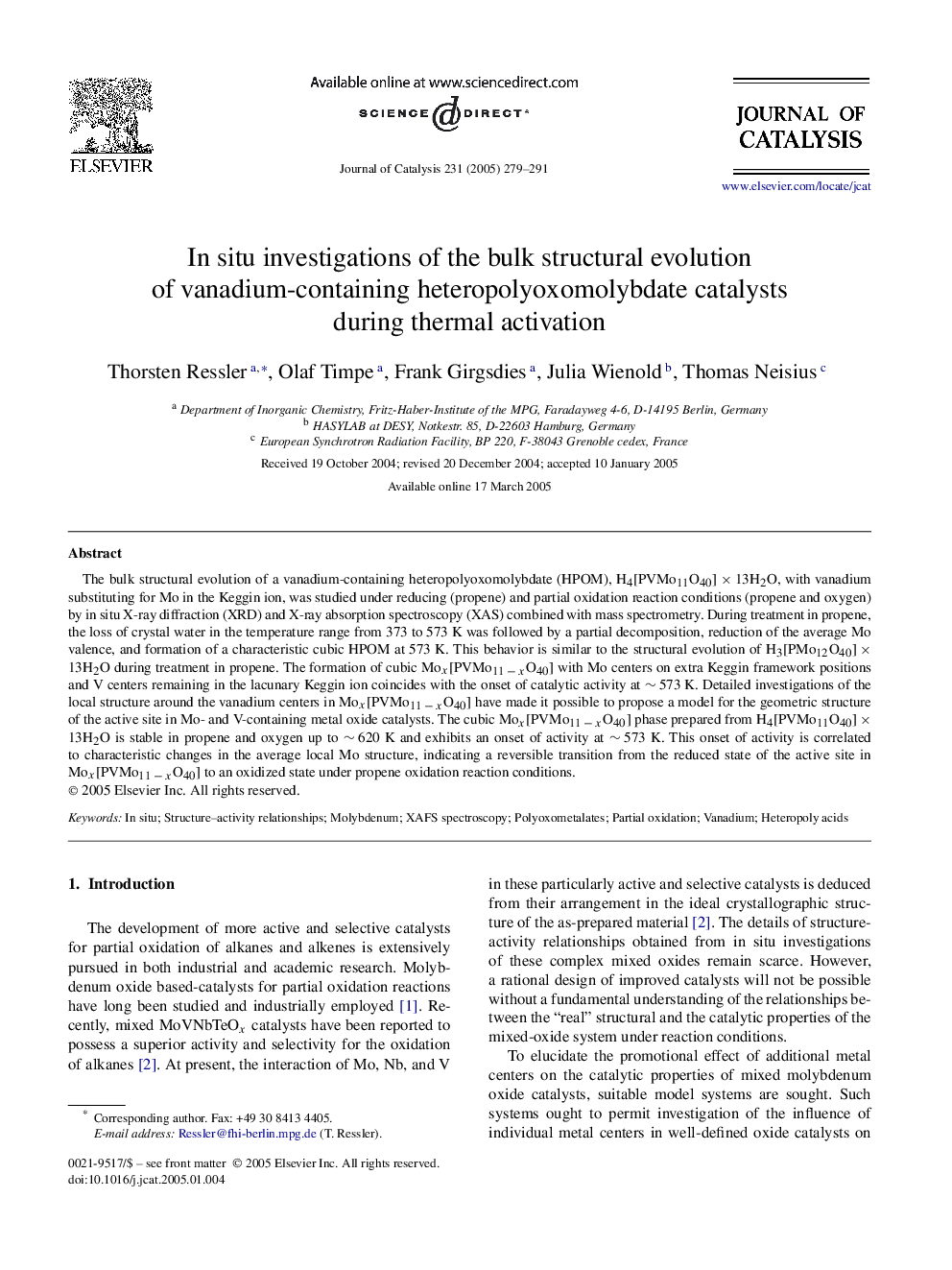| Article ID | Journal | Published Year | Pages | File Type |
|---|---|---|---|---|
| 10244604 | Journal of Catalysis | 2005 | 13 Pages |
Abstract
The bulk structural evolution of a vanadium-containing heteropolyoxomolybdate (HPOM), H4[PVMo11O40] Ã 13H2O, with vanadium substituting for Mo in the Keggin ion, was studied under reducing (propene) and partial oxidation reaction conditions (propene and oxygen) by in situ X-ray diffraction (XRD) and X-ray absorption spectroscopy (XAS) combined with mass spectrometry. During treatment in propene, the loss of crystal water in the temperature range from 373 to 573 K was followed by a partial decomposition, reduction of the average Mo valence, and formation of a characteristic cubic HPOM at 573 K. This behavior is similar to the structural evolution of H3[PMo12O40] Ã13H2O during treatment in propene. The formation of cubic Mox[PVMo11âxO40] with Mo centers on extra Keggin framework positions and V centers remaining in the lacunary Keggin ion coincides with the onset of catalytic activity at â¼Â 573 K. Detailed investigations of the local structure around the vanadium centers in Mox[PVMo11âxO40] have made it possible to propose a model for the geometric structure of the active site in Mo- and V-containing metal oxide catalysts. The cubic Mox[PVMo11âxO40] phase prepared from H4[PVMo11O40] Ã 13H2O is stable in propene and oxygen up to â¼Â 620 K and exhibits an onset of activity at â¼Â 573 K. This onset of activity is correlated to characteristic changes in the average local Mo structure, indicating a reversible transition from the reduced state of the active site in Mox[PVMo11âxO40] to an oxidized state under propene oxidation reaction conditions.
Keywords
Related Topics
Physical Sciences and Engineering
Chemical Engineering
Catalysis
Authors
Thorsten Ressler, Olaf Timpe, Frank Girgsdies, Julia Wienold, Thomas Neisius,
